
The 1.4 million jobs added in the first half of this year are the most in any first half since 1999. Furthermore, this is the first time since September 1999-January 2000 we have seen total job growth above 200,000 for five straight months. While today’s jobs report is encouraging, many families are still struggling with long-term unemployment and wages that have been stagnant for decades. The President continues to press Congress to take steps to further strengthen the economy, including passing a transportation bill to avoid jeopardizing hundreds of thousands of jobs later this year. But he will also continue to make progress using his own authority to increase economic opportunity, support wage growth, and ensure America’s workplaces are adapting to the 21st century.
FIVE KEY POINTS IN TODAY’S REPORT FROM THE BUREAU OF LABOR STATISTICS
1. The private sector has added 9.7 million jobs over 52 straight months of job growth. Today we learned that total non-farm payroll employment rose by 288,000 in June, mainly reflecting a 262,000 increase in private employment, which is above the 203,000 per month average over the past year. April and May were revised up slightly, so that over the past twelve months, private employment has risen by a total of more than 2.4 million. In addition, the 1.4 million total non-farm jobs added in the first half of this year are the most in any first half since 1999. Furthermore, this is the first time since September 1999-January 2000 we have seen total job growth above 200,000 for five straight months.
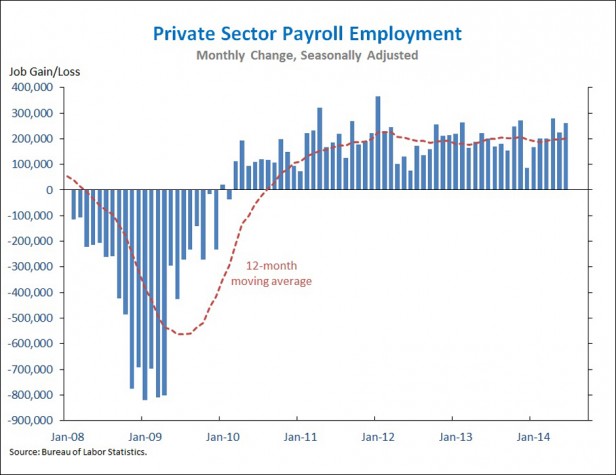
2. Private employment has increased in 52 consecutive months, the longest streak on record. The current 52-month streak has now surpassed the previous record of 51 consecutive months from February 1996 to April 2000, making it the longest streak in data going back to 1939. The steadiness of job gains is a sign of the progress that has been made in the recovery, but the President continues to believe that more can and should be done to further build on this progress.
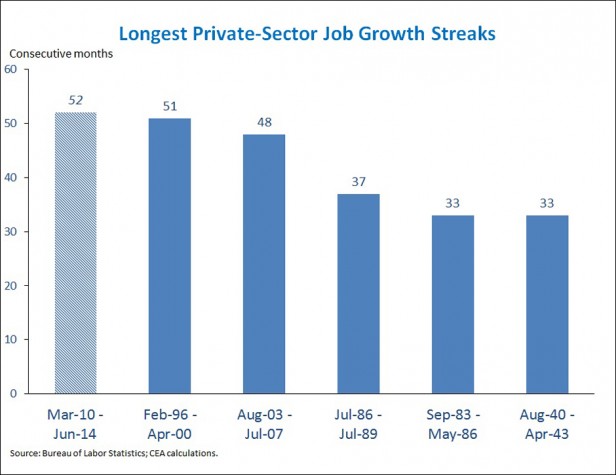
3. The unemployment rate has fallen 1.4 percentage points over the past year, the sharpest year-over-year decline in nearly three decades. The unemployment rate remains elevated because of an unacceptably high prevalence of long-term unemployment, but it is encouraging that roughly half the decline in the overall unemployment rate over the past year has come from a falling long-term unemployment rate, a disproportionate contribution since the long-term unemployed represent about one-third of the total unemployed. Another positive sign is that the overall unemployment rate has fallen 1.1 percentage point since last October entirely due to people getting jobs, as the labor force participation rate has been unchanged on balance over this time.
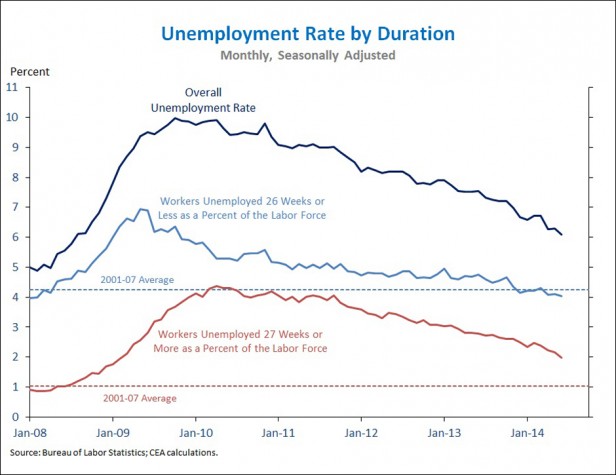
4. Aggregate hours worked by private-sector production and nonsupervisory employees rose 4.4 percent at an annual rate in the second quarter, the strongest quarterly growth since 2006. As noted last week, growth in aggregate hours worked is a proxy for total economic output that has historically been reasonably well correlated with real GDP growth. The strong growth in aggregate hours in the second quarter is consistent with a rebound in GDP growth from the first quarter, when the reported contraction in real GDP diverged substantially from the positive growth in aggregate hours and other indicators during that quarter. Overall, the labor market data paint a positive picture of the economy in the first half of the year.
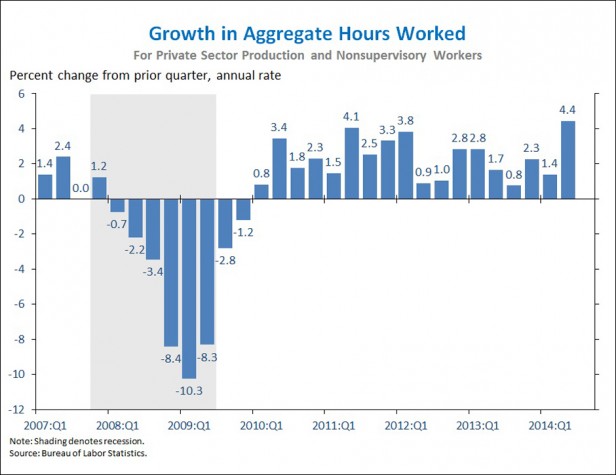
5. Total job growth in June was the 4th strongest month out of the last 52 months, and a number of industries outperformed recent trends. Looking over the 52 months since March 2010, June was a “top ten” month for the following industries: wholesale trade, retail trade, transportation and warehousing, information services, professional and business services, and state and local government. Across the 17 industries shown below, the correlation between the most recent one-month percent change and the average percent change over the last twelve months was 0.57, less than 0.82 last month, reflecting the fact that there was particularly strong job growth in some sectors.
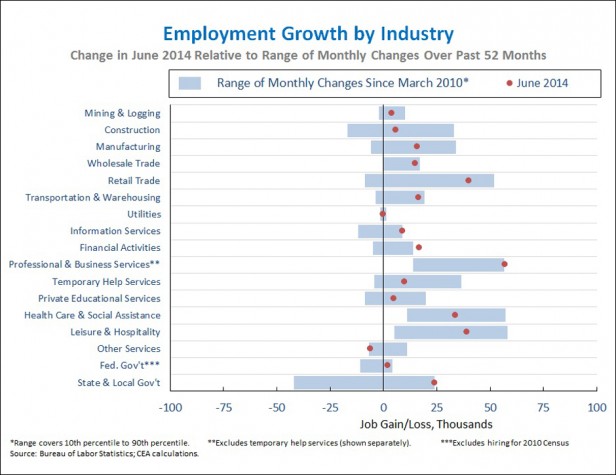
As the Administration stresses every month, the monthly employment and unemployment figures can be volatile, and payroll employment estimates can be subject to substantial revision. Therefore, it is important not to read too much into any one monthly report and it is informative to consider each report in the context of other data that are becoming available.
SOURCE: Jason Furman, White House Blog
Jason Furman is Chairman of the Council of Economic Advisers.

You must be logged in to post a comment Login